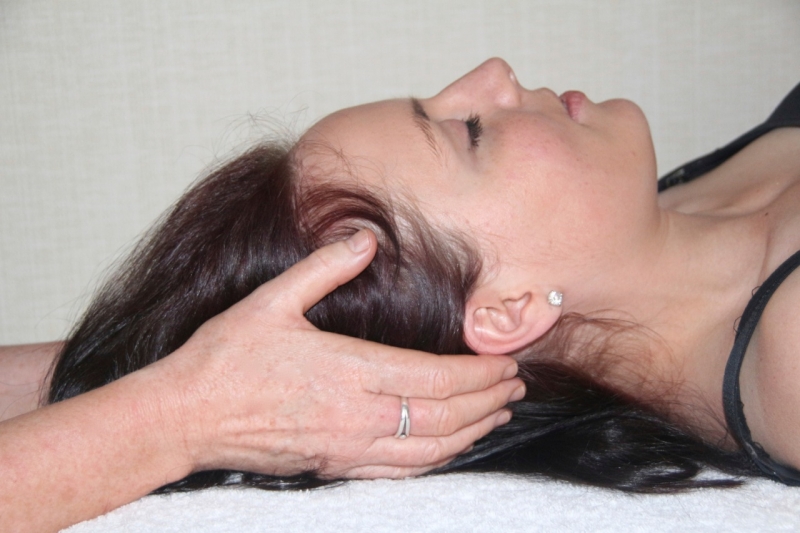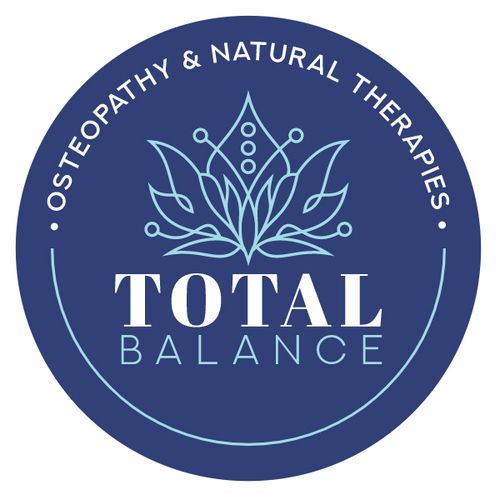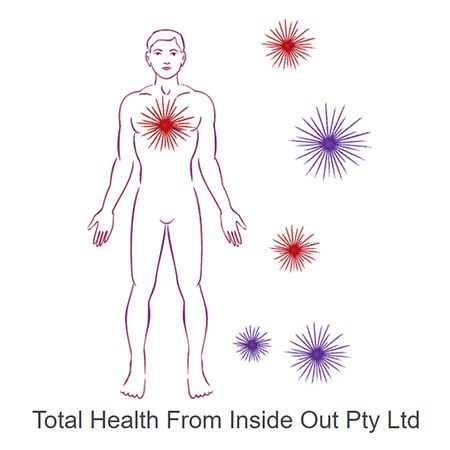
With a holistic approach to healing Biodynamic Craniosacral Therapy (BCST) is a non-manipulative technique that aims to alleviate a range of conditions. ntpages caught up with Michelle Driscoll, Chairperson of the Pacific Association of Craniosacral Therapists (PACT), and an experienced therapist, to find out more about this versatile modality.

How did you come to be involved in Biodynamic Craniosacral Therapy? What got you hooked?
I had already trained in a number of other modalities and had experienced many. I had injured my back and was in a lot of pain so decided to try BCST. The experience was life changing. The therapist very gently held her hands under my sacrum and lower back and I started to feel lots of different sensations. My whole body began to tingle and I felt incredibly ‘alive’. My body then jerked and my leg kicked up in the air. I almost hit the therapist in the face. It felt like my back had adjusted itself. I then went into a space of deep relaxation. I couldn’t remember ever feeling so peaceful and relaxed, and yet incredibly present. When I got up from the table my back pain was gone. I was definitely hooked. I had to learn how to do this.
How Does Biodynamic Craniosacral Therapy work and what are its benefits?
Every cell in the body expresses what we call Craniosacral Rhythm or Primary Respiration. These are subtle rhythmic motions, tide-like rhythms, and are a direct expression of health in the body. At the core of the body the cerebrospinal fluid, which bathes and cushions the brain and spinal cord, expresses this motion in a tide like ebb and flow. All the other tissues and structures of the body follow their own particular pattern. Craniosacral therapists are trained to listen to the body in such a way that we are able to feel these expressions of the body and get a sense of where the cranial rhythm isn’t expressing itself as it could be.
When we have stress and trauma in our lives, which we all do our tissues may contract in response to this and remain contracted. We may start to feel fragmented. We may not have the resources to deal with what is happening and so become overwhelmed. This can all affect how our cranial rhythm is expressed in our bodies, and so start to affect our health, physically, mentally and emotionally.
A Biodynamic Craniosacral therapist offers a relational touch through presence and spaciousness that duplicates the secure, stable relationships necessary for healthy growth when we are infants. This is the security our brain is looking for. By listening to the body in this way, the body gets to tell its story and feel heard without judgment or expectation. When we are present with someone’s expressions of his or her life force in this way, healing takes place. The Intelligence in the body starts to reorganize the body’s tissues and this can bring about change down to the neural and cellular levels. The body starts to come back to a place of wholeness, rather than fragmentation. Tissues release, fluids flow unrestricted, patterns of holding change in the body. Old trauma patterns held in our tissues resolve. Health is restored.
What can I expect from a session?
When you arrive for a treatment the therapist will take some notes about why you are seeking treatment, medical and background history, and a general discussion about how you are feeling. You will then lie on the treatment table fully clothed, or sit in a chair if lying isn’t comfortable, but will be asked to remove shoes and belts and anything else that might be restrictive.

The therapist will encourage you into an awareness of your body and then get a sense of where they need to make contact with your system. They will lightly place their hands on your body. Most commonly this would be at the head, back, sacrum, shoulders and feet, but other parts of the body may be contacted also. The therapist will always let you know where they are going to make contact and ask you if this is ok before doing so. It is imperative that you feel safe and comfortable at all times.
The therapist will let you know what they are feeling in your system. This may happen throughout the session or at the end. You may be asked what you are noticing in your body. You may feel lots of different sensations in your body including tingling, waves through your body, involuntary twitching or jerking, heat, cool, heaviness, lightness, sense of floating, stretching of the tissues, deep relaxation, or perhaps nothing much at all.
At the end of a session you may feel deeply relaxed. If you were experiencing pain you may notice that the pain is reduced or no longer there. You may also feel more centred, calm, whole and more balanced. Your body may continue to process for up to a day or so after the session, and you may start to notice changes in your body and how you feel. After the session your therapist will have a discussion with you about what you might expect after the session and whether more sessions are recommended.
What are some of the most common ailments people come to you for?
BCST is effective, safe and gentle for people of all ages, from babies to the elderly, and people seek treatment for a wide range of conditions. These include aches, painful conditions, injuries, digestive issues, migraine and headaches, exhaustion, sleeping problems, acute and chronic conditions. I see a lot of people with emotional and stress related conditions. People who have experienced traumatic events in their lives and are suffering from PTSD. People who are experiencing anxiety and suffer from panic attacks, that can be very debilitating. More and more pregnant women are seeking BCST as it helps as the body changes and prepares for labour. Post labour it supports a woman’s body to recover. Babies also respond very well to BCST and are brought for a variety of concerns, such as colic, reflux and generally calming their little nervous systems after what can sometimes be a difficult journey into the world.
People often seek BCST when nothing else has worked and they find this therapy makes a difference when nothing else has.
The list of conditions which may benefit from this therapy is long and comprehensive, as most imbalances, whether physical, emotional or spiritual in origin, respond to Biodynamic Craniosacral Therapy. The following is a selection from the many conditions which may respond favourably:
|
|
How long does a session take and how many sessions do people usually need?
A Biodynamic Craniosacral therapy session generally lasts about an hour with hands on time usually around 40 to 45 minutes. The number of sessions needed depends on what your goals are, what symptoms you have, and how readily your system responds to the therapy. As a general rule, three to ten sessions will have a significant impact on most people’s heath, and in some cases only one session can make a major difference. Some conditions require regular sessions for longer periods of time, followed by occasional sessions to maintain health.
What other therapies might be combined with Biodynamic Craniosacral Therapy?
Biodynamic Craniosacral Therapy can be used as a primary treatment method or combined with other traditional or complementary therapies.
What are its origins?
Biodynamic Craniosacral Therapy originated back in the early 1900’s with the discoveries of an Osteopath, Dr William Garner Sutherland. He was fascinated by the bones of the skull and realized that although he was taught that the joints of the skull were fused together at adolescence, that this was not so. They in fact were designed to accommodate movement and he designed a helmet, which was capable of restricting individual cranial bones, and experimented on himself to prove his theory. He found that the restriction of different areas of the skull affected his body and health in different ways. He then focused on Primary Respiration (the breathing and movement of body tissues, as opposed to secondary or lung breathing) and on what he called inhalation and exhalation. He wrote about an approach where no force from outside was used, but the potency or life force is trusted to initiate and carry out healing processes. He referred to this as the Intelligence of the body and the ordering system behind this, The Breath of Life. The cranial approach was carried on through a lineage of Osteopaths, the most prominent being Rollin Becker and James jealous.
In the 1970’s an American osteopath, Dr John Upledger DO started to teach what he called CranioSacral Therapy to non-osteopaths. His work continues to be taught worldwide by the Upledger Institute.
Dr Franklin Sills DO further developed cranial work and created the Karuna Institute in Devon England in 1982. He began to teach cranial work to non-osteopaths, along with his wife Maura Sills and Dr Claire Dolby DO. Franklyn and the teachers at the Karuna Institute started to apply Biodynamic principles to the way they taught, working with the Breath of Life and the inherent treatment plan, and it started to become clear that the practitioner was more of a facilitator, offering a way of listening to the client’s body that encouraged the right environment for the healing process to occur. This differed from Bio-mechanical Craniosacral therapy, which tended to be practitioner led with a series of protocols to be followed. Dr Franklyn Sills also coined the term Craniosacral Biodynamics.
From there Franklyn and his colleagues began to branch out and taught BCST throughout Europe and America. Today trainings and practices continue to grow throughout the world. Consequently, practitioner organizations have been developed around the world. In Europe the Biodynamic Craniosacral Therapy Association (BCSTA) is the main accrediting body. The UK is covered by The Craniosacral Therapy Educational Trust (CTET), and America has the International Affiliation of Biodynamic Trainings (IABT). The Pacific Association of Craniosacral Therapists (PACT) covers Asia and the South Pacific.
These organizations encourage the development of Biodynamic Craniosacral therapy, ensure their schools’ professional standards are maintained, and therefore the graduate therapists are fully qualified.
You are involved in the Pacific Association of Craniosacral Therapists. What are its goals?
Yes, I am currently the Chairperson of the Pacific Association of Craniosacral Therapists (PACT).

PACT was formed in 2000 to support and promote the growing number of Biodynamic Craniosacral Therapists in NZ, Au and Asia.
As PACT accredited training schools expand their teaching further out into the world, so our membership base also expands and we now have members as far away as India and Canada. We currently have two accredited training schools. Stillness Trainings who teach throughout Australia and New Zealand, and Body Intelligence Training, who teach throughout Australia, New Zealand, Asia, parts of the Middle East and Europe, Canada and the USA.
Our goals at PACT are as follows:
PACT undertakes to support its members in their capacity as practitioners to provide:
- A high level of knowledge and skill
- A commitment to continue with professional development
- A commitment to adhere to a professional code of conduct and practice
- A forum for like-minded Craniosacral Therapists for professional growth and development
PACT also has a commitment to:
- Enhance awareness of Biodynamic Craniosacral Therapy
- Set standards for Biodynamic Craniosacral Therapists and the practice of Biodynamic Craniosacral Therapy
- Establish and uphold the Association’s Code of Ethics and Practice
- Support on-going professional development of members
- Support quality education in the field of Biodynamic Craniosacral Therapy
- Provide an information centre from which to disseminate knowledge of Biodynamic Craniosacral Therapy, it’s standard of practice, and to provide the names of practicing members to the general and professional public
How do I know that a Practioner has the right training? What qualification should I be looking for?
PACT recommends that you choose a Registered Craniosacral Therapist. If they have RCST after their name, this ensures they are fully qualified, meet the professional standards and follow the Code of Ethics.
Typically a therapist would have completed a minimum of 700hrs including tutor contact time, anatomy and physiology, assignments and documented practice. The diploma training is taught over a two-year period, as it takes time in between modules to embody the work. Actual class time is a minimum of 45 Days. It is also important to find a registered therapist as that ensures they are committed to ongoing professional development.
|
Do you have a natural health & wellness business? |









